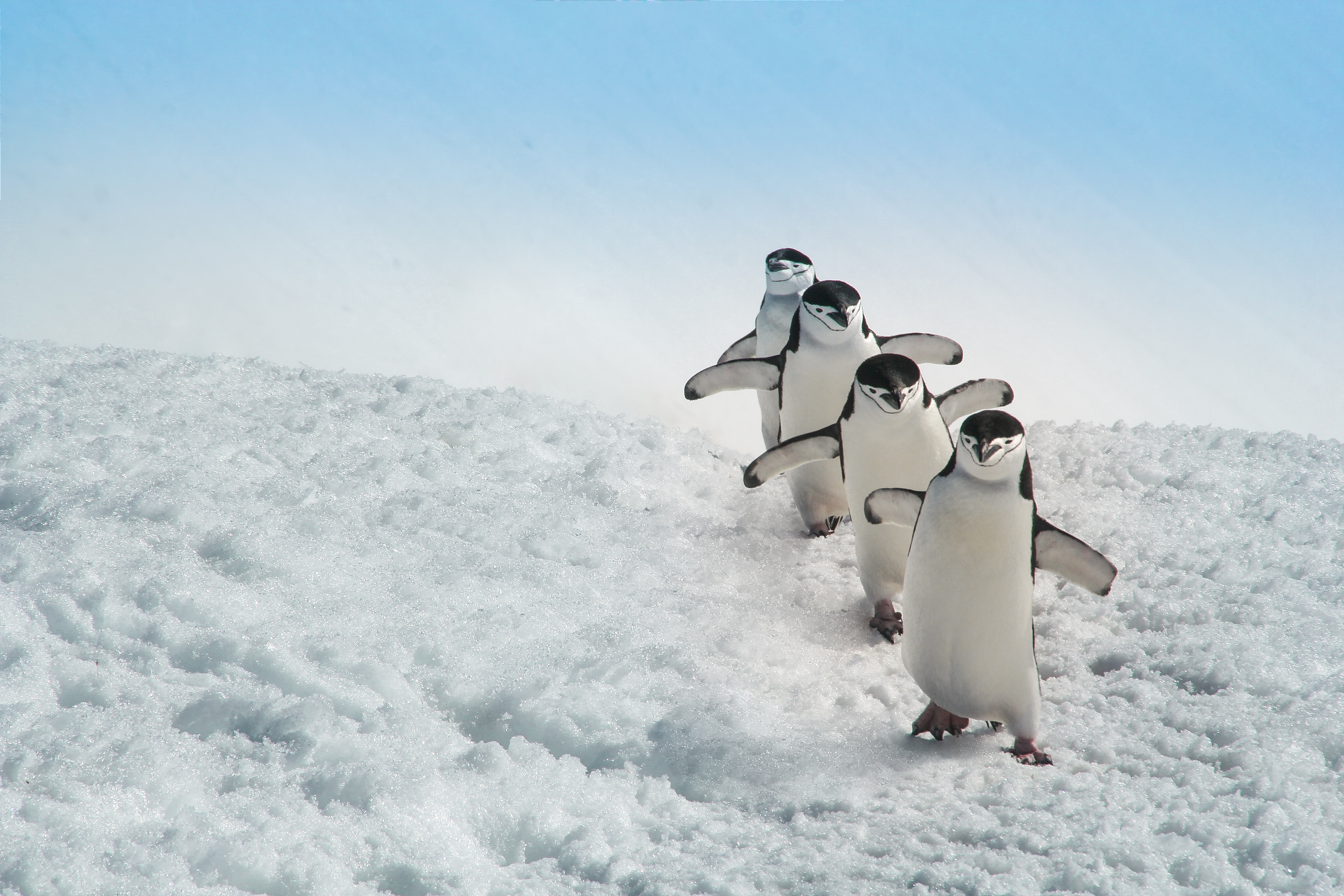



Penguin populations have been decreasing for years because of environmental and marine pollution and climate change. According to the International Union for Conservation of Nature (IUCN), five of the world’s 18 penguin species are endangered. The populations of 12 species have been decreasing for decades, in some cases by 50 to 80 percent.
Penguins play a crucial role in the ecosystem of the Southern Ocean and the Antarctic. They mostly live in cold coastal waters in the southern hemisphere between latitudes of 45° and 60°. Penguins serve as prey for other animals but are also predators in their own right. Because they are near the top of the food chain and relatively easy to count, they are reliable indicators of conditions and changes in Antarctic ecosystems.
Penguin populations are shifting
But penguins are also threatened by climate change. Ocean currents can shift because of climate change, destroying penguin habitats. For example, the Antarctic Polar Front is shifting to the south, and with it the hunting grounds that are a reliable source of food for penguins. Using satellite imagery, researchers have determined that penguin populations of various species have been shifting for several years. King penguins are particularly affected. They are the tallest penguin species, growing to a height of 120 centimeters, and are one of the high-Antarctic sea ice species whose populations are in decline. Populations of gentoo penguins, a sub-Antarctic species, have at least grown in some regions.
An example of global cooperation
The Antarctic Treaty was signed in 1959. It is an example of international cooperation and is intended to protect the region around the South Pole from human activities such as mining. An annex to the treaty addresses the protection of marine life. For example, it specifies catch limits for krill fisheries; krill are a main source of food for penguins.